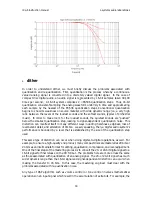
rdq-6 instruction manual
z-systems audio laboratories
6
•
stereo-linked/dual-mono mode
The Left/Right Front and Left/Right Surround digital processor cards can be configured to run
in either stereo-linked or dual-mono modes. In stereo-linked mode, the controls and displays
pertain to both the left and the right channels simultaneously. When changes are made to
any parameter, both channels will be affected. In dual-mono mode, you have independent
control of the left and right audio channels. The center/sub processor bank is always in dual-
mono mode.
F
IGURE
5
How to do it. Press the
system
button and select the
LINK
submenu. The display will
appear as shown in Figure 5. To change the link mode, simply rotate the knob below the link-
mode selection display for the front and surround processor cards. If in S2 mode, the L/R TTC
label will also be shown and the link status for this board can be changed as well. Pressing
the button underneath
BACK
will take you to the system menu and pressing the button
underneath
EXIT
will return you to the normal operating mode
.
•
output wordwidth (dither) selection
For a more thorough discussion of dither, please refer to Appendix A.
The rdq-6 allows you to control the dither for each processor card so that each of the output
signals are compatible with your digital-to-analog converter(s). The rdq-6 carries out its
computations in 40-bit floating-point arithmetic, which then must be converted back to a
fixed-point representation usable by your DACs. Internally, the 40-bit result is first converted
to 24-bit fixed-point. The dither control then determines how many bits appear at the outputs
of the rdq-6 and how those bits are obtained. You can choose from:
•
24 bits
•
truncated to 20 bits (no dither)
•
dithered to 20 bits
•
truncated to 16 bits (no dither)
•
dithered to 16 bits





















